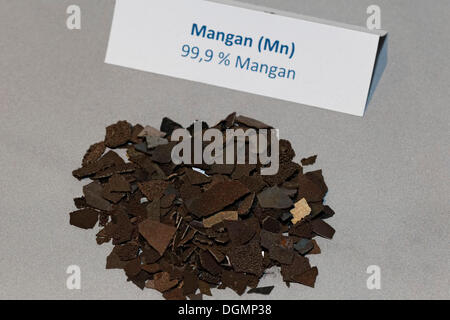
Iron and manganese share common absorption and transport proteins, including the divalent metal transporter 1, the lactoferrin receptor, transferrin, and ferroportin (reviewed in 10). Absorption of manganese from a meal decreases as the meal's iron content increases (7). Glycosaminoglycan synthesis, which requires manganese-activated glycosyltransferases, may also play an important role in wound healing (9). A genetic disorder known as prolidase deficiency results in abnormal wound healing among other problems and is characterized by abnormal manganese metabolism (7).
#Mn element use skin
Manganese is required for the activation of prolidase, an enzyme that functions to provide the amino acid, proline, for collagen formation in human skin cells (8). Wound healing is a complex process that requires increased production of collagen. Manganese is the preferred cofactor of enzymes called glycosyltransferases these enzymes are required for the synthesis of proteoglycans that are needed for the formation of healthy cartilage and bone (7). Manganese deficiency results in abnormal skeletal development in a number of animal species. Glutamate is an excitotoxic neurotransmitter and a precursor to an inhibitory neurotransmitter, γ-aminobutyric acid (GABA) (5, 6). In the brain, the manganese-activated enzyme, glutamine synthetase, converts the amino acid glutamate to glutamine. Pyruvate carboxylase, a manganese-containing enzyme, and phosphoenolpyruvate carboxykinase (PEPCK), a manganese-activated enzyme, are critical in gluconeogenesis - the production of glucose from non-carbohydrate precursors. Arginase, another manganese-containing enzyme, is required by the liver for the urea cycle, a process that detoxifies ammonia generated during amino acid metabolism (3). MetabolismĪ number of manganese-activated enzymes play important roles in the metabolism of carbohydrates, amino acids, and cholesterol (4). MnSOD catalyzes the conversion of superoxide radicals to hydrogen peroxide, which can be reduced to water by other antioxidant enzymes (3). The superoxide radical is one of the reactive oxygen species produced in mitochondria during ATP synthesis. Because mitochondria consume over 90% of the oxygen used by cells, they are especially vulnerable to oxidative stress. Manganese superoxide dismutase (MnSOD) is the principal antioxidant enzyme in the mitochondria.
#Mn element use Activator
Manganese (Mn) plays an important role in a number of physiologic processes as a constituent of multiple enzymes and an activator of other enzymes (2).


The derivation of its name from the Greek word for magic remains appropriate, because scientists are still working to understand the diverse effects of manganese deficiency and manganese toxicity in living organisms (1). Manganese is a mineral element that is both nutritionally essential and potentially toxic.
#Mn element use professional


 0 kommentar(er)
0 kommentar(er)
